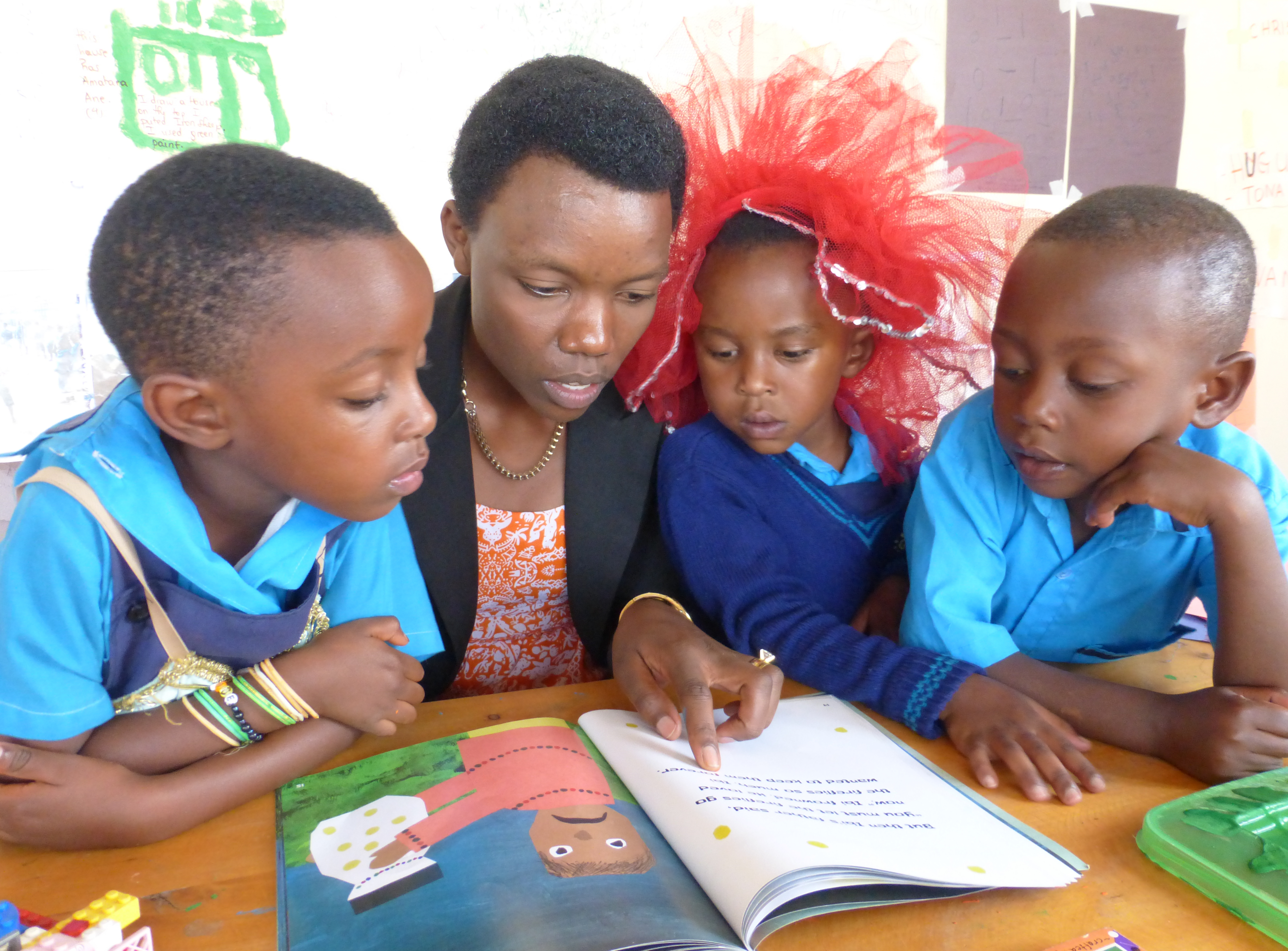|
Analytic Phonics
Analytic phonics (sometimes referred to as analytical phonics or implicit phonics) refers to a very common approach to the teaching of reading that starts at the word level, not at the sound (phoneme) level. It does not teach the blending of sounds together as is done in synthetic phonics. One method is to have students identify a common sound in a set of words that each contain that same sound. For example, the teacher and student discuss how the following words are alike: ''pat'', ''park'', ''push'' and ''pen''. Analytic phonics is often taught together with levelled-reading books, look-say practice, and the use of aids such as phonics worksheets. Analytic phonics can also help with spelling. For example, a student learns that the initial sound in ''pig'' is the same as that in ''pen'' and ''pat'', so they conclude that they must write that sound with the same letter (grapheme) "p". Sometimes, analytic phonics is referred to as ''Implicit phonics'' because the understanding ... [...More Info...] [...Related Items...] OR: [Wikipedia] [Google] [Baidu] |
Phoneme
A phoneme () is any set of similar Phone (phonetics), speech sounds that are perceptually regarded by the speakers of a language as a single basic sound—a smallest possible Phonetics, phonetic unit—that helps distinguish one word from another. All languages contain phonemes (or the spatial-gestural equivalent in sign languages), and all spoken languages include both consonant and vowel phonemes; phonemes are primarily studied under the branch of linguistics known as phonology. Examples and notation The English words ''cell'' and ''set'' have the exact same sequence of sounds, except for being different in their final consonant sounds: thus, versus in the International Phonetic Alphabet (IPA), a writing system that can be used to represent phonemes. Since and alone distinguish certain words from others, they are each examples of phonemes of the English language. Specifically they are consonant phonemes, along with , while is a vowel phoneme. The spelling of Engli ... [...More Info...] [...Related Items...] OR: [Wikipedia] [Google] [Baidu] |
Synthetic Phonics
Synthetic phonics, also known as blended phonics or inductive phonics, is a method of teaching English reading which first teaches letter-sounds (grapheme/phoneme correspondences) and then how to blend (synthesise) these sounds to achieve full pronunciation of whole words. Overview Synthetic phonics refers to a family of programmes which aim to teach reading and writing through the following methods: * Teaching students the correspondence between ''written letters'' (graphemes) and ''speech sounds'' (phonemes), known as “grapheme/phoneme correspondences” or “GPCs” or simply “letter-sounds”. For example, the words ''me'' and ''pony'' have the same sound at the end, but use different letters. * Teaching students to read words by ''blending'': identifying the graphemes (letters) in the word, recalling the corresponding phonemes (sounds), and saying the phonemes together to form the sound of the whole word. * Teaching students to write words by ''segmenting'' spoken wo ... [...More Info...] [...Related Items...] OR: [Wikipedia] [Google] [Baidu] |
Look-say
Reading is the process of taking in the sense or meaning of symbols, often specifically those of a written language, by means of sight or touch. For educators and researchers, reading is a multifaceted process involving such areas as word recognition, orthography (spelling), alphabetics, phonics, phonemic awareness, vocabulary, comprehension, fluency, and motivation. Other types of reading and writing, such as pictograms (e.g., a hazard symbol and an emoji), are not based on speech-based writing systems. The common link is the interpretation of symbols to extract the meaning from the visual notations or tactile signals (as in the case of braille). Overview Reading is generally an individual activity, done silently, although on occasion a person reads out loud for other listeners; or reads aloud for one's own use, for better comprehension. Before the reintroduction of separated text (spaces between words) in the late Middle Ages, the ability to read silently was conside ... [...More Info...] [...Related Items...] OR: [Wikipedia] [Google] [Baidu] |
Grapheme
In linguistics, a grapheme is the smallest functional unit of a writing system. The word ''grapheme'' is derived from Ancient Greek ('write'), and the suffix ''-eme'' by analogy with ''phoneme'' and other emic units. The study of graphemes is called '' graphemics''. The concept of graphemes is abstract and similar to the notion in computing of a character. (A specific geometric shape that represents any particular grapheme in a given typeface is called a glyph.) Conceptualization There are two main opposing grapheme concepts. In the so-called ''referential conception'', graphemes are interpreted as the smallest units of writing that correspond with sounds (more accurately phonemes). In this concept, the ''sh'' in the written English word ''shake'' would be a grapheme because it represents the phoneme /ʃ/. This referential concept is linked to the ''dependency hypothesis'' that claims that writing merely depicts speech. By contrast, the ''analogical concept'' defines gr ... [...More Info...] [...Related Items...] OR: [Wikipedia] [Google] [Baidu] |
Whole Language
Whole language is a philosophy of reading and a discredited educational method originally developed for teaching literacy in English to young children. The method became a major model for education in the United States, Canada, New Zealand, and the UK in the 1980s and 1990s, despite there being no scientific support for the method's effectiveness. It is based on the premise that learning to read English comes naturally to humans, especially young children, in the same way that learning to speak develops naturally. Whole-language approaches to reading instruction are typically contrasted with the more effective phonics-based methods of teaching reading and writing. Phonics-based methods emphasize instruction for decoding and spelling. Whole-language practitioners disagree with that view and instead focus on teaching meaning and making students read more. The scientific consensus is that whole-language-based methods of reading instruction (e.g., teaching children to use context cu ... [...More Info...] [...Related Items...] OR: [Wikipedia] [Google] [Baidu] |
Balanced Literacy
Balanced literacy is a theory of teaching reading and writing the English language that arose in the 1990s and has a variety of interpretations. For some, balanced literacy strikes a balance between whole language and phonics and puts an end to the so called "reading wars". Others say balanced literacy, in practice, usually means the whole language approach to reading. Some proponents of balanced literacy say it uses research-based elements of comprehension, vocabulary, fluency, phonemic awareness and phonics and includes instruction in a combination of the whole group, small group and 1:1 instruction in reading, writing, speaking and listening with the strongest research-based elements of each. They go on to say that the components of a balanced literacy approach include many different strategies applied during reading and writing workshops. On the other hand, critics say balanced literacy, like whole language, is a ''meaning-based'' approach that when implemented does not inc ... [...More Info...] [...Related Items...] OR: [Wikipedia] [Google] [Baidu] |
Phonics
Phonics is a method for teaching reading and writing to beginners. To use phonics is to teach the relationship between the sounds of the spoken language (phonemes), and the letters (graphemes) or groups of letters or syllables of the written language. Phonics is also known as the alphabetic principle or the ''alphabetic code''. It can be used with any writing system that is alphabetic, such as that of English, Russian, and most other languages. Phonics is also sometimes used as part of the process of teaching Chinese people (and foreign students) to read and write Chinese characters, which are not alphabetic, using pinyin, which is alphabetic. While the principles of phonics generally apply regardless of the language or region, the examples in this article are from General American English pronunciation. For more about phonics as it applies to British English, see Synthetic phonics, a method by which the student learns the sounds represented by letters and letter combina ... [...More Info...] [...Related Items...] OR: [Wikipedia] [Google] [Baidu] |
Reading (process)
Reading is the process of taking in the sense or meaning of symbols, often specifically those of a written language, by means of Visual perception, sight or Somatosensory system, touch. For educators and researchers, reading is a multifaceted process involving such areas as word recognition, orthography (spelling), Alphabetic principle, alphabetics, phonics, phonemic awareness, vocabulary, comprehension, fluency, and motivation. Other types of reading and writing, such as pictograms (e.g., a hazard symbol and an emoji), are not based on speech-based writing systems. The common link is the interpretation of symbols to extract the meaning from the visual notations or tactile signals (as in the case of braille). Overview Reading is generally an individual activity, done silently, although on occasion a person reads out loud for other listeners; or reads aloud for one's own use, for better comprehension. Before the reintroduction of Palaeography, separated text (spaces betwe ... [...More Info...] [...Related Items...] OR: [Wikipedia] [Google] [Baidu] |
Phonemic Awareness
Phonemic awareness is a part of phonological awareness in which listeners are able to hear, identify and manipulate phonemes, the smallest mental units of sound that help to differentiate units of meaning (morphemes). Separating the spoken word " cat" into three distinct phonemes, , , and , requires phonemic awareness. The National Reading Panel has found that phonemic awareness improves children's word reading and reading comprehension and helps children learn to spell. Phonemic awareness is the basis for learning phonics. Phonemic awareness and phonological awareness are often confused since they are interdependent. Phonemic awareness is the ability to hear and manipulate individual phonemes. Phonological awareness includes this ability, but it also includes the ability to hear and manipulate larger units of sound, such as onsets and rimes and syllables. Impact on reading development Studies by Vickie Snider have shown that phonemic awareness has a direct correlation wit ... [...More Info...] [...Related Items...] OR: [Wikipedia] [Google] [Baidu] |
Phonetics
Phonetics is a branch of linguistics that studies how humans produce and perceive sounds or, in the case of sign languages, the equivalent aspects of sign. Linguists who specialize in studying the physical properties of speech are phoneticians. The field of phonetics is traditionally divided into three sub-disciplines on questions involved such as how humans plan and execute movements to produce speech (articulatory phonetics), how various movements affect the properties of the resulting sound (acoustic phonetics) or how humans convert sound waves to linguistic information (auditory phonetics). Traditionally, the minimal linguistic unit of phonetics is the phone (phonetics), phone—a speech sound in a language which differs from the phonological unit of phoneme; the phoneme is an abstract categorization of phones and it is also defined as the smallest unit that discerns meaning between sounds in any given language. Phonetics deals with two aspects of human speech: production ( ... [...More Info...] [...Related Items...] OR: [Wikipedia] [Google] [Baidu] |
Learning To Read
Learning is the process of acquiring new understanding, knowledge, behaviors, skills, values, attitudes, and preferences. The ability to learn is possessed by humans, non-human animals, and some machines; there is also evidence for some kind of learning in certain plants. Some learning is immediate, induced by a single event (e.g. being burned by a hot stove), but much skill and knowledge accumulate from repeated experiences. The changes induced by learning often last a lifetime, and it is hard to distinguish learned material that seems to be "lost" from that which cannot be retrieved. Human learning starts at birth (it might even start before) and continues until death as a consequence of ongoing interactions between people and their environment. The nature and processes involved in learning are studied in many established fields (including educational psychology, neuropsychology, experimental psychology, cognitive sciences, and pedagogy), as well as emerging fi ... [...More Info...] [...Related Items...] OR: [Wikipedia] [Google] [Baidu] |




